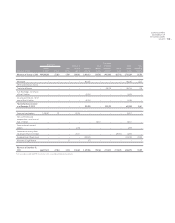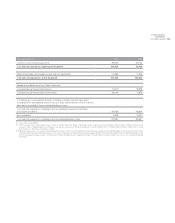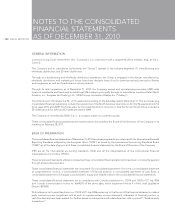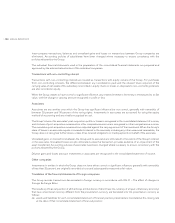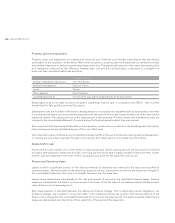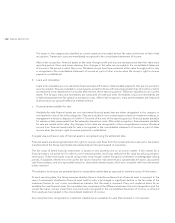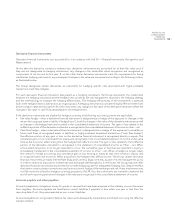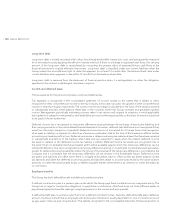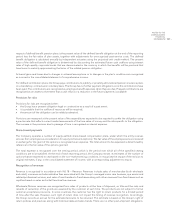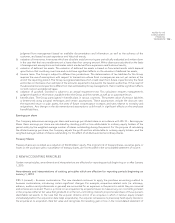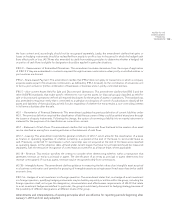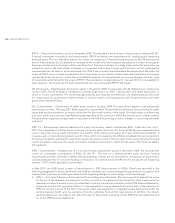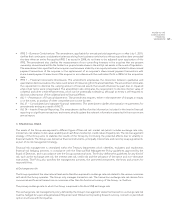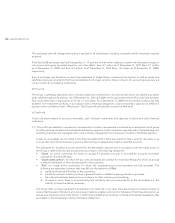LensCrafters 2010 Annual Report Download - page 131
Download and view the complete annual report
Please find page 131 of the 2010 LensCrafters annual report below. You can navigate through the pages in the report by either clicking on the pages listed below, or by using the keyword search tool below to find specific information within the annual report.|129 >
NOTES TO THE
CONSOLIDATED
FINANCIAL
STATEMENTS
Derivative financial instruments
Derivative financial instruments are accounted for in accordance with IAS 39 – Financial Instruments: Recognition and
Measurement.
At the date the derivative contract is entered into, derivative instruments are accounted for at their fair value and, if
they are not designated as hedging instruments, any changes in fair value after initial recognition are recognized as
components of net income for the year. If, on the other hand, derivative instruments meet the requirements for being
classified as hedging instruments, any subsequent changes in fair value are recognized according to the following criteria,
as illustrated below.
The Group designates certain derivatives as instruments for hedging specific risks associated with highly probable
transactions (cash flow hedges).
For each derivative financial instrument designated as a hedging instrument, the Group documents the relationship
between the hedging instrument and the hedged item, as well as the risk management objectives, the hedging strategy
and the methodology to measure the hedging effectiveness. The hedging effectiveness of the instruments is assessed
both at the hedge inception date and on an ongoing basis. A hedging instrument is considered highly effective when both
at the inception date and during the life of the instrument, any changes in fair value of the derivative instrument offset the
changes in fair value or cash flows attributable to the hedged items.
If the derivative instruments are eligible for hedge accounting, the following accounting criteria are applicable:
Fair value hedge• – when a derivative financial instrument is designated as a hedge of the exposure to changes in fair
value of a recognized asset or liability (“hedged item”), both the changes in fair value of the derivative instrument as well
as changes in the hedged item are recorded in the consolidated statement of income. The gain or loss related to the
ineffective portion of the derivative instrument is recognized in the consolidated statement of income as other – net.
Cash flow hedge• – when a derivative financial instrument is designated as a hedge of the exposure to variability in
future cash flows of recognized assets or liabilities or highly probable forecasted transactions (“cash flow hedge”),
the effective portion of any gain or loss on the derivative financial instrument is recognized directly in equity. The
cumulative gain or loss is removed from equity and recognized in the consolidated statement of income at the same
time as the economic effect arising from the hedged item affects income. The gain or loss related to the ineffective
portion of the derivative instrument is recognized in the statement of consolidated income as Other – net. When
a forecasted transaction is no longer expected to occur, the cumulative gain or loss that was reported in equity is
immediately transferred to the consolidated statement of income to other – net. When a hedge no longer meets
the criteria for hedge accounting, any cumulative gain or loss existing in equity at that time remains in equity, and
is recognized when the economic effect arising from the hedged item affects income. The Group utilizes derivative
financial instruments, primarily Interest Rate Swap and Currency Swap contracts, as part of its risk management policy
in order to reduce its exposure to interest rate and exchange rate fluctuations. In the future, the Group may use other
derivative financial instruments should they be considered appropriate for adequately hedging risks. Despite the fact
that certain currency swap contracts are used as an economic hedge of the exchange rate risk, these instruments may
not fully meet the criteria for hedge accounting pursuant to IAS 39. If so, the instruments are marked to market at the
end of each reporting period and changes in fair value are recognized in the consolidated statement of income.
Accounts payable and other payables
Accounts payable are obligations to pay for goods or services that have been acquired in the ordinary course of business
from suppliers. Accounts payable are classified as current liabilities if payment is due within one year or less from the
reporting date. If not, they are presented as non–current liabilities.
Accounts payable are recognized initially at fair value and subsequently measured at amortized cost using the effective
interest method.


